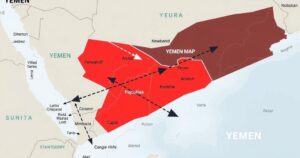Third Earthquake Strikes Southern California in Just Hours

On February 10, Southern California was shaken by three earthquakes, the last being a 3.6 magnitude tremor near San Bernardino. The occurrences prompted considerable reporting from residents. It highlights the importance of earthquake preparedness and safety measures for individuals in at-risk locations.
On February 10, Southern California experienced its third earthquake in just a few hours, according to the U.S. Geological Survey (USGS). The latest tremor, measuring 3.6 in magnitude, struck shortly before 10 p.m. at a depth of approximately 5 miles, located 3 miles northeast of San Bernardino. Reports indicated that over 500 individuals from areas including Victorville and Riverside felt the quake.
Earlier in the day, two additional earthquakes occurred in the same vicinity, with the first recording a magnitude of 3.6 at 9:44 a.m., followed by a 3.0-magnitude event at 9:48 a.m. These earlier shocks were felt by over 600 people from locations such as Barstow and Riverside, while around 70 individuals reported sensations from the latter quake.
San Bernardino is situated approximately 60 miles east of Los Angeles. The USGS explains that earthquake magnitude measures the energy released at the quake’s source, replacing the outdated Richter scale. Magnitudes between 2.5 and 5.4 are usually felt but infrequently result in significant damage.
Earthquakes can induce various hazards, including fires, tsunamis, landslides, and avalanches. While they may occur anywhere, regions like Alaska, California, Hawaii, Oregon, Puerto Rico, and Washington are among the most susceptible areas. The Department of Homeland Security provides crucial advice on earthquake preparedness which is essential for safety.
In the event of an earthquake, individuals should take immediate protective actions based on their location. Those in vehicles should pull over and stop, while individuals lying in bed should face down and cover their heads with a pillow. Outdoors, it is advisable to distance oneself from buildings and avoid going indoors.
If one is indoors, best practices include remaining inside, avoiding doorways, and staying away from windows. The recommended emergency procedure is to ‘drop, cover, and hold on.’ Officials encourage individuals to crawl under sturdy furniture and secure themselves while being prepared to move with it if necessary.
Post-earthquake hazards may include structural damage, gas leaks, and fallen power lines, and individuals should expect aftershocks. Preparedness entails being ready to repeat protective actions in response to such aftershocks, prioritizing safety above all else.
In summary, Southern California experienced three significant earthquakes within a short span on February 10, with magnitudes recorded at 3.6 and 3.0. Residents reported feelings of the tremors throughout various locations. Earthquake preparedness is crucial, and individuals should know how to protect themselves effectively during such incidents. Understanding the risks and establishing safety measures can significantly enhance personal safety during earthquakes.
Original Source: www.sacbee.com








